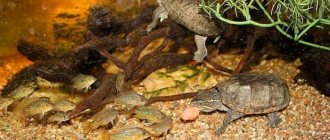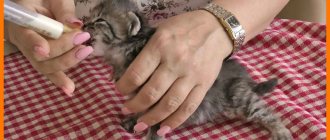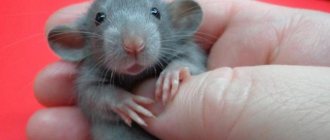Almost every family has pets. They become favorites of both adults and children. Today, many people prefer to have exotic animals that do not cause much trouble to their owners. Decorative reptiles have become popular because there is no need to collect fur and feathers from them throughout the house. They don’t wake you up in the morning and call you for a walk, they don’t scream like exotic birds. In addition, they are hypoallergenic, which is very important nowadays. Therefore, those who want to have a pet give preference to turtles. At the same time, for some reason they are looking for small animals on the Internet and in pet stores. Dwarf turtles - what they are and where it is best to buy them, as well as how to care for your pet, these are the points that you need to pay attention to before making a purchase.
General information about turtles
Before learning how to care for a turtle, it is important to understand what kind of creature it is. These animals belong to the reptiles, and their oldest remains found by scientists date back to a period of 220 million years ago. Turtles have undergone a long evolution, some species have disappeared, some have transformed. In modern science, there are 328 species! Initially, they are divided into terrestrial and marine, and terrestrial - into freshwater and land. A distinctive feature of the turtle is that it carries its “home”, its shell, on itself. This is a type of skeleton that is located outside and protects the animal from environmental hazards. The upper part of the shell, convex, is called the carapace, and the lower, flat part is called the plastron. In case of danger, the turtle pulls its head, legs and tail into its shell and thus avoids many dangers.
The branch of zoology that studies turtles is called herpetology, and a veterinarian who specializes in the treatment of these animals is called a herpetologist. This doctor knows better than anyone how to care for turtles and often works in zoos.
In many cultures, these reptiles are sacred, but some species are also used by humans as food.
Although a turtle cannot purr, make any pleasant sounds or “understand” its owner the way, for example, a cat does, many people enjoy watching this animal. It is very important to know how to care for a turtle, because improper care can cost your pet her life.
Methods of content
The turtle can be found quite often in houses and apartments. Some owners allow them to move freely around their living quarters, set up a separate place for food and drink (almost like for cats), and even try to train them to use the toilet. That is, in this case, the animal is in free mode, but within the boundaries of the apartment, of course.
Is it correct? Most experts believe that this should not be the case.
Moreover, such freedom can be dangerous for the turtle. She can accidentally swallow household garbage, get stuck in a heating radiator, or catch a cold in a draft. There have been cases when apartment residents accidentally stepped on their armored pet...
In general, to keep a turtle and take good care of it, you need a terrarium - its own territory.
What to do if you find a pet on the street?
The first thing to do if you find a turtle on the street is to determine its species as soon as possible and, first of all, find out whether it is a land or aquatic species. This will determine what kind of help you can provide her. To determine the species, you can contact your veterinarian or search for information on the Internet.
If you find a marsh or Caspian turtle in the south of Russia, then try to quickly return it to its native environment, since, most likely, it lives in this area.
The red-eared turtle was most likely abandoned by careless owners or lost. You can try to place her in good hands or take her for yourself, creating suitable conditions for her. Read below to learn how to care for your red-eared turtle.
If you find a Central Asian tortoise, it was most likely lost by its owners while out for a walk. You can place a notice on poles and porches in the nearby area, perhaps you will help the animal return to its terrarium. If the owner is not found, then it is necessary to arrange for the turtle a spacious temporary or permanent home at home according to the information on how to care for the turtle.
About the benefits of walking
On a warm, dry summer day at a temperature not lower than +25 degrees, it is recommended to take a walk in the yard.
You can take the turtle to a green lawn or grassy lawn and let it go for a walk in the fresh air.
You need to choose a place that is quiet and clean. If there is a high level of external noise, the animal may become frightened and hide under its shell. There is no need to make the turtle nervous.
Plants at the walk site should be edible - dandelion, clover, plantain.
Keep a close eye on the turtle while walking, because this seemingly leisurely creature can turn out to be extremely agile. Reptiles love to climb into various shelters and dig well.
What to do with the foundling?
The found animal most likely had been without food or drink for some time, and dehydration is the main problem for the reptile. The first thing you need to do is put the turtle in a bowl of warm water (the water is poured up to the chin) and keep it there for at least two hours. The turtle will drink and absorb the liquid through its skin. This will strengthen her strength. After bathing, do not lubricate your turtle's shell with vegetable oil, as this will clog the pores and lead to unpleasant consequences.
At first, you need to feed the turtle every day, and then every other day (if it is an adult). You can feed the animal with a mixture of herbs, vegetables (cucumbers, tomatoes) and fruits.
Now let's take a closer look at how to care for a turtle (we'll describe several different common types).
land turtle
The most common type of land turtle is the Central Asian one. As the name suggests, it lives in Central Asia and is a heat-loving species. These animals are listed in the Red Book and are most often smuggled. Despite this, and perhaps because of this, they are the most common species found in ordinary homes.
Some turtle owners are irresponsible about keeping the animal; they keep it on the floor in winter, sometimes without even knowing which radiator the turtle is warming itself under. This is extremely harmful for the animal! It is enough to look at photographs of mutilated turtles, with rickety shells, with cracks in the carapace from exposure to furniture, to understand that it is necessary to create suitable climatic conditions for the animal.
Here we will tell you how to care for a land turtle. It is necessary to place it in a terrarium, provide bathing, walks, food and ultraviolet radiation, as well as an incandescent lamp.
How to arrange a terrarium?
The terrarium should be spacious for the turtle. For a medium-sized individual, you need a terrarium of about 80 cm by 50 cm. If you plan to place several turtles there, then the volume of the terrarium should be increased by one and a half to two times.
One of the important conditions for keeping turtles is the presence of an ultraviolet lamp. Ultraviolet radiation, affecting the shell and skin of the turtle, promotes the absorption of calcium from food, because calcium is the most important building material for the shell. The UV lamp should be mounted at a height of about 40-50 cm and should be changed on average once every six months. Such a lamp should burn for approximately the entire daylight hours, this is especially important in the winter season.
The incandescent lamp is also important. It creates warmth for the animal. The incandescent lamp should burn all daylight hours.
You need to build a house in the terrarium, something like a shelter for a turtle. You can either make such houses yourself from a box or buy them at a pet store.
It is especially important to choose the right soil to cover the bottom of the terrarium. The soil can be either homogeneous or mixed, the main thing is that its particles are large, and the turtle cannot accidentally swallow them. Large sawdust or wood shavings, hay, river pebbles, medium-sized pebbles, etc. are suitable for covering the bottom of the terrarium. Sawdust can be changed once every month or two, and the pebbles and pebbles can be washed under running water and doused with boiling water before subsequent use.
Caring for turtles and keeping turtles at home
There are more than 335 species of turtles that inhabit different continents. Some species are very popular and easy to buy in pet stores, some are rarer, and some species are difficult to see even in zoos. Animal lovers in Russia most often keep the following types of turtles in their homes: freshwater red-eared turtle, freshwater marsh turtle, freshwater turtle Trionics and land Central Asian turtle. In the south of Russia the Mediterranean tortoise and the marsh tortoise are found, in the east of Russia the Far Eastern trionix is found, and in Ukraine and Belarus the marsh tortoise is found. Red-eared turtles are brought in large numbers from nurseries in Europe and Asia, and then bad people release American turtles into Russian ponds, so the chance of meeting a red-eared turtle in a river or pond is very high.
This is what the most popular types of turtles look like:
Central Asian land tortoise (lat.Agrionemys horsfieldii)
A yellow-beige turtle with dark spots on the shell, usually up to 25 cm long. The turtle is listed in the Red Book and the CITES list and is prohibited for sale without documents, which is ignored by pet stores and, of course, smugglers.
The Central Asian tortoise lives in the states of Central Asia: Kazakhstan, Uzbekistan, Tajikistan in steppe and semi-desert regions.
Like all land turtles, it feeds on vegetation (field plants, dried forage grasses, indoor plants, and occasionally permitted vegetables). Meat, milk, bread and white cabbage, fruits are strictly contraindicated for it. Once a week, the turtle should receive calcium and reptile vitamin powder.
For maintenance you need: a terrarium 100-120 cm long, 40 cm high and 50 cm wide + UV lamp 10-12% UVB + incandescent lamp + soil (sandy loam, river sand + earth in a 1:1 ratio, hay only in the house or corner in small quantities) + house. In the basking area, you can place flat sandstone, flat stones, and tiles turned upside down. The background temperature in the terrarium should be 23-25 in a cold corner and 33-35 at the warming point under an incandescent lamp. It is not recommended to put a turtle into hibernation, since this is a complex and multi-step process that requires many years of experience and skills of a professional keeper. Due to incorrect and unprepared hibernation conditions, the turtle may emerge from hibernation sick or not wake up at all (die). >> Read about keeping a Central Asian tortoise at home
Freshwater red-eared slider (Trachemys scripta)
This bright green (the shell becomes dark as an adult) turtle with red “ears” on its head has become very popular throughout the world in the last 25 years. The turtle can bite painfully, although it is not very aggressive.
This turtle is the most popular and the most “aquarium turtle” in our country and in many others.
The turtle lives in the USA and is brought to Russia from turtle farms. It is strictly forbidden to release it into Russian water bodies - this harms the ecosystem, and besides, the turtles themselves rarely survive the winter.
The turtle is freshwater and carnivorous (snails, feeding insects, raw freshwater low-fat fish with bones and entrails, occasionally dry food), but it also needs dry land and plant food (algae, or lettuce, dandelions).
For maintenance you need: an aquarium with a shore of 100 l + UV lamp 5-10% UVB + incandescent lamp 40-60 W + filter. The usual water temperature for turtles is about 22–25 C and air temperature 26-33 C, depending on the time of year. If the temperature is too low or high, the turtle will stop feeding and become passive. >> Read about keeping a red-eared turtle at home
European marsh turtle (Emys orbicularis)
A black turtle with yellow stripes or dots on its shell and skin.
Swamp turtles live in the south of Russia and in some neighboring countries (Poland, Ukraine, etc.). It usually turns out to be brought by people who pick up or buy turtles on vacation in the south.
The turtle is freshwater and carnivorous (snails, feeding insects, raw freshwater low-fat fish with bones and entrails, and occasionally dry food), but it needs dry land and plant food (algae, or lettuce, dandelions).
For maintenance you need: an aquarium with a shore of 100 l + UV lamp 5-10% UVB + incandescent lamp + filter. The usual water temperature for turtles is about 22–25 C and air temperature 26-33 C, depending on the time of year. If the temperature is too low or high, the turtle will stop feeding and become passive. >> Read about keeping a marsh turtle at home
Chinese trionix / Far Eastern tortoise (lat.Pelodiscus sinensis)
A greenish-brown turtle with small dark spots on its skin-covered shell, it has a long neck, a proboscis on its muzzle, and 3 claws on its paws.
The turtle is completely aquatic, feeds only on animal food (snails, feeding insects, raw freshwater low-fat fish with bones and entrails, occasionally dry food), and is very aggressive.
Lives in the Far East of Russia, China, Vietnam, Korea, etc. The turtle is listed in the Red Book and is prohibited for sale, which is ignored by pet stores.
For maintenance you need: an aquarium from 100 l + UV lamp 5% UVB + incandescent lamp + filter. The usual water temperature for turtles is about 22–25 C and air temperature 26-33 C, depending on the time of year. If the temperature is too low or high, the turtle will stop feeding and become passive. >> Read about the contents of Chinese Trionix at home
You can read more about feeding turtles, aquariums and terrariums, and caring for turtles in the relevant sections.
It is important to know:
- You cannot add new turtles to existing ones without prior quarantine.
- If symptoms of disease occur or if you refuse to feed for a long time, you should contact a veterinarian-herpetologist.
- If turtles in the same aquarium/terrarium are fighting or are too aggressive, they need to be separated.
- Turtles should not be allowed to come into contact with other pets.
- Land turtles (and sometimes aquatic ones) are kept on the floor like cats and dogs, as a result the turtles are stepped on, they are injured by other pets, they catch colds, and quickly develop rickets, vitamin deficiency, arthritis and kidney failure.
- They buy a pair for the turtle so that it doesn’t get bored, but the result is fights and bitten off paws and tails. Turtles are loners! And they only need a pair for reproduction.
- Feeding turtles the wrong food leads to serious problems with internal organs and even death. Just because a turtle eats something doesn’t mean it’s okay for it.
WE ARE RESPONSIBLE FOR THOSE WE HAVE TAMED!
Swimming a land turtle
So, you have set up a terrarium, that is, a house for the turtle. But the animal does not spend all its time in the terrarium! She needs food, walks and bathing to be healthy.
You need to bathe your turtle twice a week, in warm water, so that the water reaches the animal’s chin. In case of contamination, you can wash the turtle with baby soap with a sponge, but make sure that the soap does not get into its eyes or mouth. After bathing (10-15 minutes), the turtle is blotted with a dry cloth and placed in a terrarium under an incandescent lamp to warm up; this is important for the health of the turtle so that it does not catch a cold.
Walking with a turtle
You can walk with a turtle outside only if the average air temperature over several days exceeds 25 degrees Celsius. If the turtle wants to go into the shadows, don't stop it and keep an eye on it, as usually these little lumps become a target for dogs and children, and it can simply get lost.
At home, you can release a turtle on the sofa; you should not let the turtle walk on the floor: even if you clean regularly, you are still not immune from dust.
An adult should be fed every other day: greens, salad, grass, vegetables and fruits. You can use fertilizers recommended by your herpetologist.
They walk, but with breaks
Turtles in the aquarium prefer to walk along the bottom of their home, however, with one amendment: they cannot walk there for a long time, since nature has not endowed them with gills that allow them to breathe under water. Consequently, such walks for turtles in the aquarium are interrupted from time to time to go to the surface. They rise up to take a breath of oxygen.
You should choose the right aquarium for your turtle. Where to buy an aquarium for turtles? If you need an expensive aquarium that you can be proud of, buy an aquarium for turtles in our online store. Such a small aquarium does not mean that the aquarium has no soil at all. It is advisable to add a little river sand and medium-sized gravel to the bottom of the turtle’s house. Although most species of turtles do not require soil and can do without it quite normally, soil not only performs decorative functions, it is also a second filter in the aquarium. For decoration and for a more stable biological balance, you can plant several artificial plants here, not live aquarium plants. All of them, if not eaten, will be trampled. Plus, plants also need to create additional conditions. Artificial greenery decorates the aquarium.
Aquatic turtle
A few words should also be said about how to care for an aquatic turtle. Most often it is either a red-eared turtle or a marsh turtle.
Aquatic turtles need a terrarium with water, with the same set of lamps as for land turtles. It is important that the animal has the opportunity to get “to the shore”, to the island. This turtle eats most often in water. You can feed her with special food, seafood and small fish, peeled and peeled shrimp, adding grass and greens to the food.
You can keep fish and snails together with the turtle, and also plant non-toxic algae.
The soil in the aquaterrarium is not necessary, but it is important that the transition from the water part of the terrarium to land is rough (so that the animal can wear down its claws).
You need to change the water in the terrarium as needed, approximately once every week or two. The water temperature should be around 31-33 degrees Celsius.
If you like a red-eared turtle, how to care for it, you can ask at the zoo or read on thematic resources, and also use the tips from this article.
sea view
Caring for a marine one is no easier than a land one, but it is just as entertaining. This reptile is called a marine reptile, although it lives only in fresh water, so the aquaterrarium needs to be filled with ordinary unsalted water.
Preparing the aquaterrarium
Decide on its size. If you have only one small reptile measuring five to six centimeters, an aquaterrarium with a volume of 10 liters will be enough for it, but any living creature grows, so buy a home “for growth”.
The reptile needs space to swim and a dry island. You can buy such a device at a pet store. If properly arranged, the animal should climb onto the island without any problems; the water that flows from the wet turtle flows freely into the “pool” and does not linger on the island.
Cover the bottom of the aquaterrarium with pebbles, having previously treated them in boiling water. Algae and decorative elements will improve the appearance of your home, but do not clutter it. Turtles can share an aquaterrarium with small fish or snails. At the same time, your reptile should not be hungry, otherwise you will no longer see fish.
Do not add fresh water, let it steep. The water temperature is constant, 26-27 °C, on land it reaches 30 °C. Maintain this temperature with a lamp; be sure to measure the distance from the lamp to the shore. The distance to the bottom is more than 25 centimeters, otherwise it will end badly for the animal.
Be sure to install an ultraviolet lamp; its light is necessary for normal growth of the reptile. A water filter is also important for a turtle's comfortable life.
Change the water in the aquaterrarium once a month.
Food and health
You can buy food at the pet store. Do not give your pet the same food for a long time, as this is bad for his health. Change and combine the animal’s diet: it needs plant and animal food. For example, live fish, bloodworms, vegetables, fruits, clover. Raw beef liver is very beneficial for a young turtle.
During feeding, it is better to place the reptile in a separate bowl of water so as not to pollute its home.
Diseases
Sea turtles get sick even if they are properly cared for. There are several most common symptoms:
- the animal's shell is soft, curved;
- she eats little and is apathetic;
- the pet constantly sits on land, sniffles, breathes through an open mouth;
- The turtle's skin is peeling, its eyes are closed and swollen.
Noticed something wrong with your pet? Don't hesitate to contact your veterinarian. Not every one of them will be able to make a correct diagnosis, because not all clinics can treat sea turtles. Try asking your friends or using the Internet to find out which veterinary hospital provides services for their treatment.
That's all. Now you can properly care for your turtle at home.
Little turtles
If you are wondering how to care for a small turtle, then know that it is much easier than caring for a large one. Turtles that grow to no more than 12-13 cm across the shell are considered small. These are the following types of turtles: flat-bodied, snapback, musk and others. All they need is a spacious aquarium, proper care and a balanced diet. These turtles are extremely interesting.
So, the turtle's care is simple: a little grass, vegetables and fruits, equipped housing, walks and bathing - that's all it needs.
Preparing for hibernation
Wintering time depends on the age and size of the turtle. Adult turtles can hibernate for up to 12-14 weeks. It is not recommended for young turtles to hibernate for more than 10 weeks. Caring for aquatic turtles during this period should be especially careful. The hibernation room should be small with a low water level.
Sand can be used as bedding. The turtle is transplanted into a wintering room and the temperature is gradually lowered. The temperature is lowered over two weeks. The optimal temperature for hibernation is eight degrees Celsius. The transition into and out of hibernation should be gradual. During hibernation, the animal must be checked.









